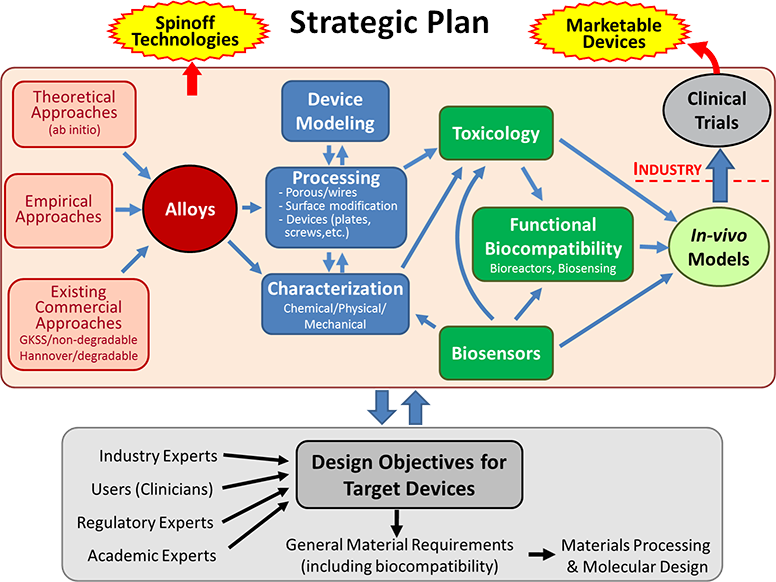Research plan
The ERC-RMB research strategic plan emphasizes multi-disciplinary, engineered systems approaches to the development of revolutionary metallic biomaterials-based devices and applications. Scientific reorganization of the enabling technologies and fundamental sciences into research thrusts (Red, Blue and Green Teams) has led to an optimized device mix within each ES. The ERC-RMB ESs are:
- ES1: Craniofacial and Orthopedic Applications
- ES2: Cardiovascular and Thoracic Devices
- ES3: Responsive Biosensors and Neural Applications
The Engineered Systems are driven by three overarching research thrust areas (color coded in our strategic plan) comprised of enabling technologies and fundamental knowledge:
- Thrust #1: New materials development (Red Team)
- Thrust #2: Materials processing/characterization and modeling (chemical, physical, mechanical, modeling) (Blue Team)
- Thrust #3: Biocompatibility testing (Green Team).
These three thrust areas (Red, Blue and Green Teams) work harmoniously to generate revolutionary breakthroughs in multiple areas of patient care leading to the development of medical systems, devices and applications across engineering systems (Grey Team). Renewed research framework also includes the following:
- Development of prototype devices and applications was established with a focus on translation of ERC technologies,
- Project management principles were applied to support alignment of project activities with overall program objectives,
- Grey Team projects developed Elevator Pitch presentations that bring increased focus to research activities and demonstrate alignment of project objectives with clinical need and commercial viability of targeted medical devices,
- QUAD chart approach was implemented to help ensure that projects addressed key unmet needs, and had SMART (Specific, Measurable, Attainable, Relevant and Timely) objectives in place that would focus project teams on those activities that could lead to protectable, commercially viable technologies.
This renewed focus has led to increased attention from potential industry partners. The strategic research plan is presented below.


